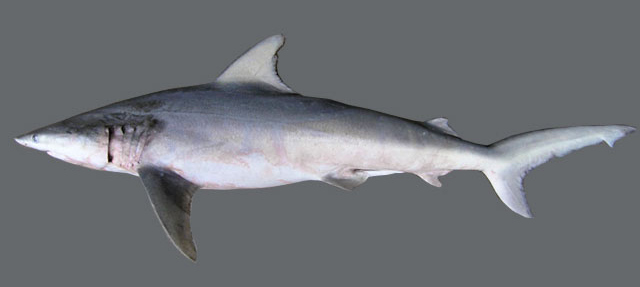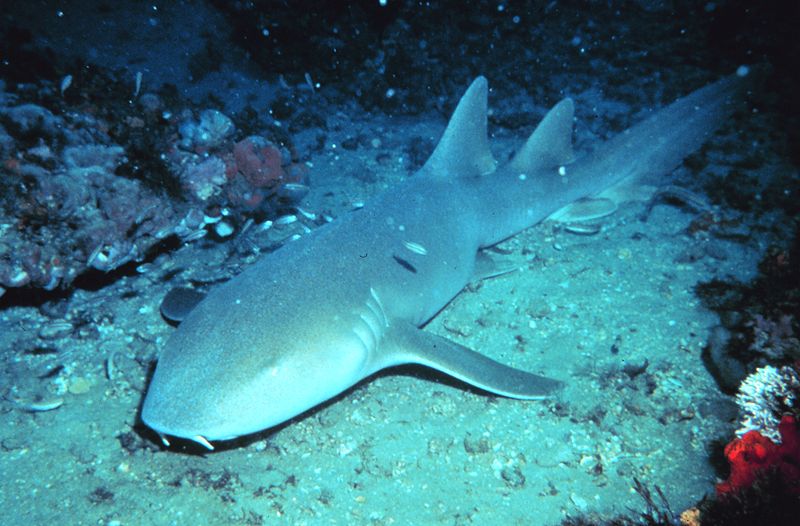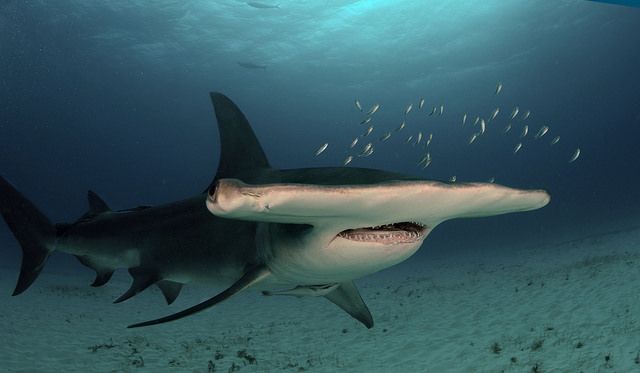Miami, Florida is a tropical tourist hotspot in the southeastern corner of the United States. More than 10 million visitors come to the coastal metropolitan city of Miami each year.
The Greater Miami area is separated from the barrier island of Miami Beach by Biscayne Bay. Located on the opposite side of Miami Beach on the eastern coast is the Atlantic Ocean, where visitors can go to enjoy some fun in the sun!
Between the nightlife of the bustling Greater Miami area and aquatic adventures in Miami Beach, there is a lot to do in this major city!
But visitors looking to enjoy the beach and waters might have one big question:
Does Miami have sharks? Is it safe to swim at Miami Beach?

Miami is home to many different species of sharks. Common sharks found in Miami, Florida waters include:
- Spinner sharks
- Bonnethead sharks
- Finetooth sharks
- Nurse sharks
- Bull sharks
- Blacktip sharks
- Tiger sharks
- Great hammerhead sharks
While Florida is the most active state in the U.S. when it comes to shark attacks, your chances of a shark encounter here are still quite rare. Miami Beach has seen only about 19 attacks since shark attacks began being recorded in the 1800s.
Let’s explore more Miami sharks, shark attack history and statistics, and photos!
Types of Sharks in Miami, Florida
There are numerous shark species that live in and around Miami waters.
Many sharks that live north of Florida migrate south to the warmer waters of the Sunshine State. Subtropical and tropical sharks are attracted to the Florida coast.
Most of these Miami sharks are inshore species and frequent shallow coastal waters and bays.
Continue reading to learn more about each of these Miami sharks and the likelihood of seeing one in Florida waters!
Spinner Shark

Spinner sharks are highly migratory. They frequently travel throughout the northern Gulf of Mexico and along the coast between North Carolina and Florida.
Often confused with the blacktip shark, spinner sharks also have black markings on the tips of their fins. Spinner sharks are slightly larger, reaching about 8 ft in length.
The spinner shark gets its name from its special feeding style. They spin while swimming through schools of fish to eat.
Spinner sharks will jump out of water while spinning, sometimes as high as 20 ft above the surface!
These fast-moving sharks are most common in Florida inshore waters during the spring and summer.
Spinner sharks aren’t considered a threat to humans, but may be provoked by activities like spearfishing.
Bonnethead Shark

One of the more abundant shark species in Florida waters is the bonnethead shark.
This shark gets its name from the bonnet-like shape of its head.
Bonnethead sharks are a nearshore species that can only be found in warmer waters of the Northern Hemisphere. They prefer waters around 70 degrees Fahrenheit, which influences migration patterns.
These sharks are pretty small. They average about 4 ft in length, but larger individuals may grow up to 5 ft long. The maximum recorded weight for a bonnethead shark was 24 pounds.
Bonnetheads are most common along the coast of Florida between spring and fall. Even if spotted in the water, these sharks aren’t a threat to humans.
They’re very shy creatures and typically avoid humans.
Finetooth Shark

The finetooth shark is a coastal water species. Its range stretches from the coast of North Carolina to southern Florida and in the Gulf of Mexico.
These sharks like warmer waters, so they migrate to Florida waters during winter months.
Juveniles are common near Miami Beach because they favor shallow waters near barrier islands. Females enter shallow nursery grounds around May to give birth.
Finetooth sharks can be fairly small, only reaching about 5 ft in length on average.
Although they’re not known to be aggressive, finetooth sharks can still pose a threat to humans.
They like to frequent very shallow waters around 33 ft deep and aren’t found much deeper than 500 ft below the surface.
Nurse Shark

Nurse sharks are very common in many different coastal, tropical, and subtropical habitats. They like to hang around the coast of Florida and the Gulf of Mexico.
They are also attracted to coral reefs, which brings them close to the Florida Reef System.
The nurse shark is very common in the southernmost regions of Florida, including Miami Beach and the Keys.
Perhaps one of the more friendly sharks of the sea, nurse sharks aren’t aggressive. They’ve been responsible for only nine attacks in modern history as of 2022.
Nurse sharks are nocturnal, so they aren’t very active when beach goers are most present. They’re often found resting on sandy bottoms during the day.
Although they’re not known to be aggressive, nurse sharks should be treated with caution because they’re capable of a powerful bite.
Bull Shark

The bull shark is one of the most aggressive sharks found in tropical and subtropical coastal waters around the world.
They’re responsible for the third highest number of shark attacks, behind the tiger and great white shark.
Bull sharks are easily confused with other requiem shark species because of their gray-colored backs and white underbelly. They’re medium-sized, averaging about 11 ft in length.
Many sharks need to live in waters with a certain level of salinity. Bull sharks have special gland and kidney functions, which allow them to stay in freshwater environments for long periods of time.
These sharks have been found traveling up rivers for hundreds of miles.
Blacktip Shark

The blacktip shark is an inshore species commonly found in estuaries, bays, and coastal waters of Florida.
They’re more common in Miami waters in warmer months because they migrate south during winter.
Blacktip sharks are very fast and active swimmers. They’re similar to spinner sharks in the way they breach the surface of water when feeding. They like to form large schools to feed on one of their favorite fish, the Spanish mackerel.
These medium-sized sharks are generally no more than 5 ft in length, but can reach a maximum length of 8 ft. Blacktips like to frequent waters less than 100 ft deep.
Blacktip sharks have been known to be involved in a number of shark attacks. They may become aggressive when provoked or when feeding.
Tiger Shark

The tiger shark is a large, curious shark found all around the world in warm temperate and tropical waters. These sharks are named for their distinct color pattern of light gray with darker gray streaks or spots.
A tiger shark is not a picky eater and will eat pretty much anything it can fit in its mouth. It can grow as long as 18 ft, but typically averages 14 ft in length.
These large sharks can weigh as much as 1,400 pounds!
Tiger sharks are considered a threat to humans due to their size, curiosity, and attack history. Tiger sharks are second behind the great white shark for most attacks.
Great Hammerhead Shark

Great hammerhead sharks inhabit tropical and subtropical coastal and open ocean waters. They can be found all along the eastern and western coast of Florida in the Gulf of Mexico and Atlantic Ocean.
Great hammerheads like to hang around coral reefs and mouths of bays. This makes the Miami Beach barrier island a preferred habitat.
Some great hammerhead populations in Miami waters may move north during the summer. They’re likely to be more abundant during winter months when water temperatures are cooler.
The great hammerhead gets its name from the hammer-like shape of its head and its large size compared to other hammerhead sharks. This shark can weigh as much as 990 pounds and grow up to 20 ft in length!
The varying diet and large size of great hammerheads can be dangerous to humans. They’re pretty defensive and easily threatened when provoked.
Shark Attack History & Statistics at Miami, Florida
Shark attacks in the United States are more common in Florida than any other state.
Florida is a popular tourist area and has a subtropical environment. Many western Atlantic Ocean shark species are attracted to the warm Florida waters and the Florida Reef System.
There were 28 shark attacks reported in the state of Florida in 2021, according to the Shark Attack File report.
However, there have been just 19 shark attacks recorded in the Miami-Dade County area since the late 1800s.
A 9-year-old boy from Montana suffered from a non-fatal shark bite on the shoulder in Miami Beach. The incident took place on the South Beach shore in March 2021. The species was described as a 4 ft gray-colored shark.
In October 2020, a local 31-year-old man was attacked by a blacktip shark in Miami Beach. The incident occurred while red flags were posted on lifeguard stands, warning beach goers to not enter the waters.
Schools of bait fish and sharks were in the area shortly after the attack. The man suffered a non-fatal injury to his leg.
Shark attacks occur most between July and September in Florida, according to the Shark Attack File. Incidents have occurred commonly in the mid-day hours between 11 a.m. and 3 p.m.
Overall, your chances of a shark encounter (much less an attack) are extremely rare, even in a relative hotbed like Miami, Florida!
Wrapping Up
Although risks of shark attacks are still considerably low, Florida has the most shark incidents annually than any other state. Volusia County, Florida experiences the most shark attacks, which is about 250 miles north of Miami.
While shark attacks in the Miami area are uncommon, caution should still be taken. Lifeguards have increased shark patrols to keep beach goers safe.
Signs and flags may be posted to give warnings of when to stay out of the water due to sharks in the area.
Many shark species live in Florida waters. Encountering a shark in Miami waters isn’t super uncommon, but shark attacks are still pretty rare.
Being aware of your surroundings in the water, swim in groups, and following lifeguard directions can help you enjoy your tropical Miami vacation!
For more, check out:
Hope this helps!